Dmitry Okruzhnov and Maria Sharova’s work 206 Partial Content is one of Gazprombank Collection’s most recent acquisitions. The artists told us about this work, and more
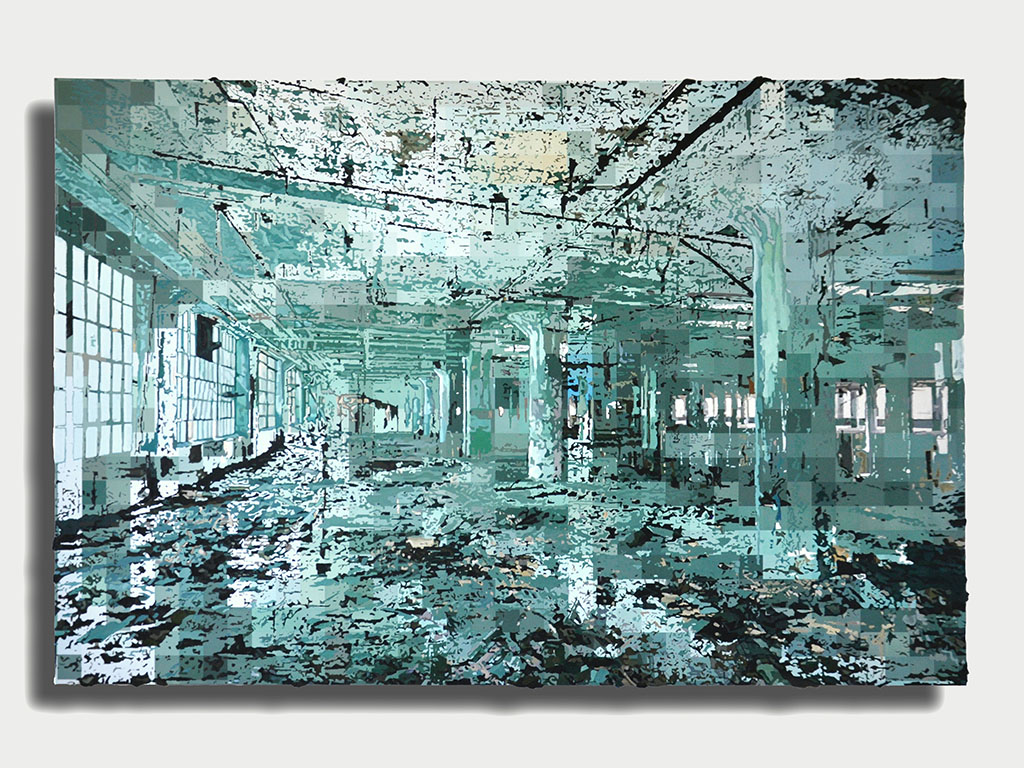
Dmitry Okruzhnov and Maria Sharova. "206 Partial сontent". 2018.
You received two types of training: a traditional, classical education at the Surikov Art Institute and then through the School of Contemporary Art Free Workshops at Moscow Museum of Modern Art. Which seems more important to you now that you are established artists?
Both were important at a certain stage. At the Surikov Art Institute they give you the opportunity to soak up the atmosphere: you’re an artist and work in a studio. We studied in the Theatre Design Department of the Painting Faculty. It offered freedom from the principles of easel painting and the teacher advised us to ‘create an image, and search for the metaphor and detail of time’. In essence that’s what we’re doing even now. We’re not so much interested in phenomena as such as in impressions of them. As theatre designers we worked with large formats, but it was only when we saw the American abstractionists that we understood the extent of the influence of large format. We were amazed by the Mark Rothko exhibition at Garage in 2010, and Antony Gormley’s exhibition there in 2009.
Overall, the system at the Surikov Art Institute isn’t adapted to the contemporary situation. It’s outdated. They teach the basics of art history, but they stop at the Impressionists, then rush through the avant-garde, [Kuzma] Petrov-Vodkin, the Society of Easel Painters, and Socialist Realism. Abstraction and contemporary art are banned. We tried to do something for ourselves outside the framework of the institute and even took part in contemporary art exhibitions, which meant we often had problems with our teachers. Our first serious involvement with contemporary art was the exhibition By Contradiction at Winzavod in 2010 (we took part as two separate artists). It was about contemporary painting. Even so, we wanted to know much more. We felt like we were in a vacuum. Of course, the internet saved us, but we didn’t have a structure for the history of art. After graduating from the institute, we didn’t know what to do next. We had an instrument — painting — but we needed to conceptualise it. It was time for a new start. We decided to continue our studies at the School of Contemporary Art Free Workshops at Moscow Museum of Modern Art. There was a new environment at the workshops, and no limitations based on schools or traditions. The students and teachers were completely different. It was a real, live, space for contemporary art. The Free Workshops gave us new possibilities.
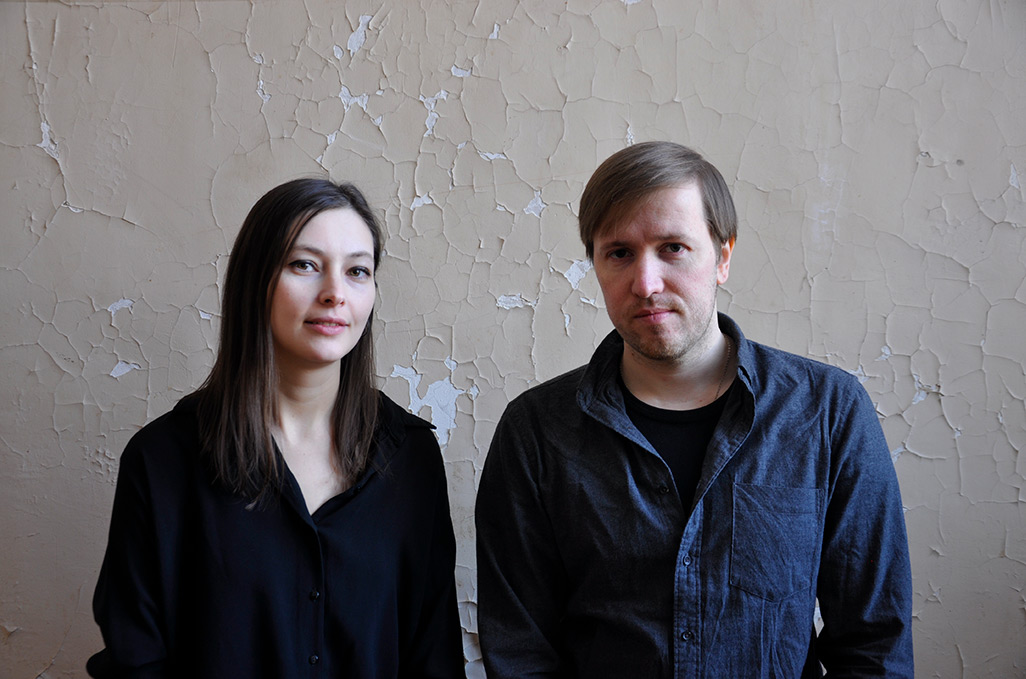
Maria Sharova and Dmitry Okruzhnov
If you could select teachers from among the artists of the past, who would you choose?
Leonardo. He was incredibly versatile and talented in a whole range of fields, from mechanics to painting. Truly erudite. That provides freedom of action, it removes barriers.
Which contemporary artists would you like to meet, to talk to?
Oh, that’s a long list! It would be interesting to meet Gerhard Richter, Mark Bradford, Ed Ruscha, Anselm Kiefer, Luc Tuymans. We could go on and on. Now it would be particularly interesting to talk to young artists like Daniel Pitin, Adrian Ghenie and Oscar Murillo. There is a certain circle of artists with whom we’re in some kind of dialogue. Both they and we are trying to combine technology and reality in the picture: Justin Mortimer, Daniel Richter, Rinus van de Velde, Li Songsong, Kon Trubkovich.
Which predecessors or contemporaries had the most influence on you?
It was different artists at different stages. When we were studying at the Surikov Institute we discovered abstract expressionism and pop art. Every name was something new. Mark Rothko, Willem de Kooning, Franz Kline, Jackson Pollock, Robert Rauschenberg, James Rosenquist, Andy Warhol, Basquiat. Then we found out about German expressionism, Cobra group, Anselm Kiefer, Georg Baselitz. Every artist was an explosion of emotions. Each time we were amazed. The English school of painting is very interesting: Peter Doig, Jenny Saville, Cecily Brown. And as far as Russian artists are concerned, Ilya Kabakov, Erik Bulatov… and, of course, the Russian avant-garde.
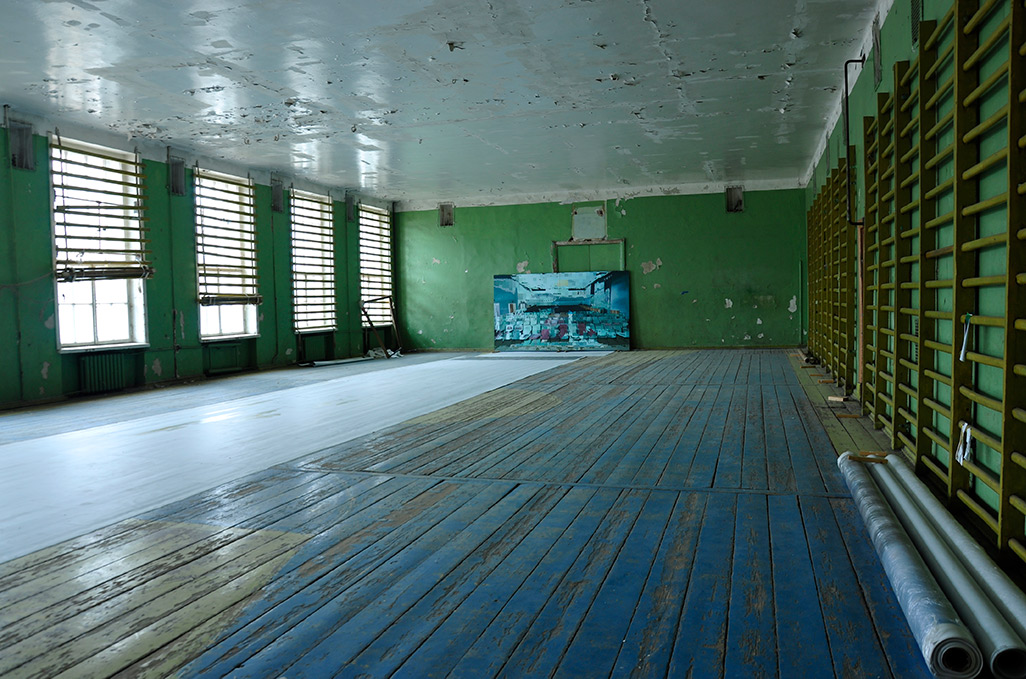
Sports hall in Nardom House of Culture. From the series "206 Partial content". 2017. Photo from the private archive of authors.
Does an artist need to know about contemporary art? Does it not make them dependent on what’s fashionable, on trends?
Knowledge doesn’t make people dependent, it broadens possibilities. You can use the knowledge or not use it. If you are able to draw, then you can choose to draw or not. You can refer to the experience of the Old Masters or deny it. But you can only do that when you know what they were doing.
In the 1990s, contemporary artists said that painting was dead, and even now you hear that quite often. Perhaps it is in the traditional sense, but painting is full of possibilities which you can use. That’s why it was important for us to get to know the New Leipzig School: Matthias Weischer, Neo Rauch, David Schnell, et al. They are still called “young German artists” and they make figurative paintings. This was a discovery for us, as we also work with the medium of painting.
Why painting, when it’s not connected to your theme. Surely something digital would be more appropriate?
For our last project, 206 Partial Content (XL Gallery, 2017), we first created a very even, smooth background, which was dense and glossy like a screen. On top of that “screen” we laid pieces of textured paint. We used oils in both cases. They are thick, tactile and textured. It was important that there was a difference between the smoothness of the background and the textured nature of the upper layer. Here oils are the right thing to use. In the project Surrounded by Reality (Moscow Museum of Modern Art, 2015), which was focused on media, we employed a printed banner and painting. The project referenced advertising and the use of print was appropriate. We covered the exhibition space (around 300 square metres) with a banner on which were printed images from the internet — pixelated and with media “noise” — with painted elements. There the medium worked differently. We like painting because despite its comprehensibility there is still the possibility to hold the viewer. There is always something of a riddle, an openness to multiple interpretations which won’t let you go, tying you up in the layers of the picture.
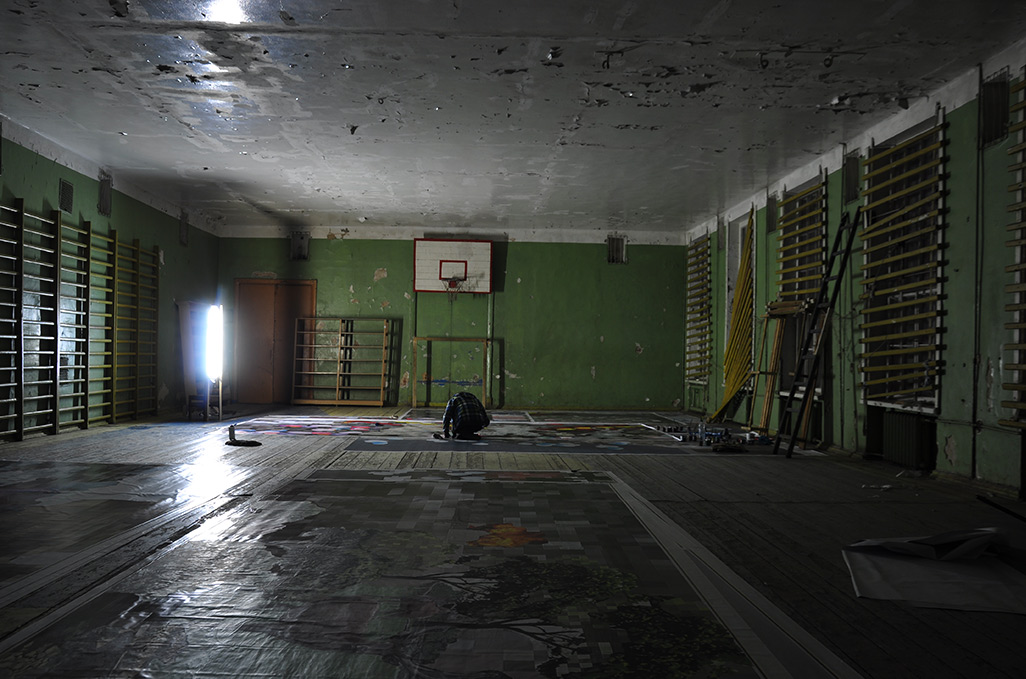
Artists studio. Work on the installation "Surrounded by Reality" for MMOMA. 2015. Photo from the private archive of authors.
You’ve had quite a few exhibitions, group shows (such as special projects at the 4th and 5th Moscow International Biennale for Young Art in 2014 and 2016 and Group Project at Fabrika Centre for Creative Industries and solo shows. How important are the space in which you exhibit and the curator?
The space is very important. We’re theatre designers, after all. First of all we create a context and immerse the viewer in the atmosphere. But we also want our paintings to be valuable in themselves, with the space helping to interpret them fully and understand them, giving an additional meaning to the project. We are interested in setting up our own symbolic space as a home for memories of the past, present and future, our feelings and emotions.
We take part in group exhibitions and are cool with that. A good curator helps artists to reveal themselves. They don’t pressurise artists but bring everything good and interesting into the open.
Can the viewer understand contemporary art without additional explanations? Can it be beautiful, and should it be?
Contemporary art cannot be completely understood without context. It has many levels. Inexperienced viewers see it on one level, art lovers on another, and professionals on yet another. But not everyone understands “old” art. That’s an illusion. The artist’s task is to appeal to everyone, regardless of how educated or knowledgeable they are.
Beauty isn’t an end in itself, but if a project considers beauty then the art should be beautiful. It all depends on what the artist wants to express. If the artist is discussing ugliness, why should the work be beautiful? Here we would separate the beauty of the visual image from the quality of presentation. We’re always for quality.
Which of your exhibitions or projects do you consider the most successful?
Every exhibition is important. Each one is a step forward and without them there won’t be a next step.
One of the most important was 206 Partial Content at XL Gallery in 2017. This project was the most effective in expressing the themes with which we regularly work and the means by which we embody them. We managed to combine our personal space with the social, cultural, philosophical and political space. The individual and the collective fused. Curator Elena Selina, the founder of the gallery, had a very tactful approach. She helped us to open up and to understand a lot of things.
The project Series of Combinations was also important. It was shown at Moscow Museum of Modern Art as part of the exhibition One Within the Other. The project was made in 2015 and we were able to do what we had not been able to do at earlier exhibitions for various reasons. The whole project became part of the MMOMA collection, which gave us confidence that we’re doing something interesting and important and going in the right direction.

Exhibition "206 Partial content". XL Gallery . 2017.
206 Partial Content includes a work which is now in the Gazprombank Collection. Tell us more about the project.
It’s a long story.
We began by thinking about the news overload experienced by people today, the boundaries of the real and the virtual (these were the themes of our first projects). Now we are more interested in personal stuff and in reality (our home and our studio) and the internet. Collapsing reality is weaker than the internet, which is stronger and more varied. They are closely interconnected and the boundaries between them are blurred. Here we see the specific nature of our time.
Eleven years ago, we began to rent a studio in the Nardom House of Culture in the town of Kineshma, which is in Ivanovo Region, where we live. Nardom was built in the 1920s in the constructivist style. The factory workers collected money to build it. Before the building was focused on culture, but now it’s empty and partly destroyed. There you exist inside a ruin, but with the internet. This place is very important for us. Half of the building has no heating. The auditorium has no lighting and there are only a few stage lights left. The red-fabric-covered chairs have moth cocoons on them. In some places the ceiling has collapsed, and paint and plaster is peeling off the walls. We were interested in the history of this building, but there wasn’t enough material in order to talk about the whole epoch. As the basis we used non-concrete images of Nardom. We are interested in combining personal history with the internet. In using our personal experience, we like to borrow from that of others. Most of our pictures come from the internet. We choose those which send us in a particular direction, where there are familiar images. Our House of Culture is simply an impulse. We combine several images, sometimes three or four different spaces, to achieve a hybrid image of a Soviet ruin. There are many such abandoned Houses of Culture and factories. There used to be four factories in our town, but now they’re all closed. It is simultaneously a metaphor for a networked ruined space. A pixel is the same kind of ruin, just within the internet.
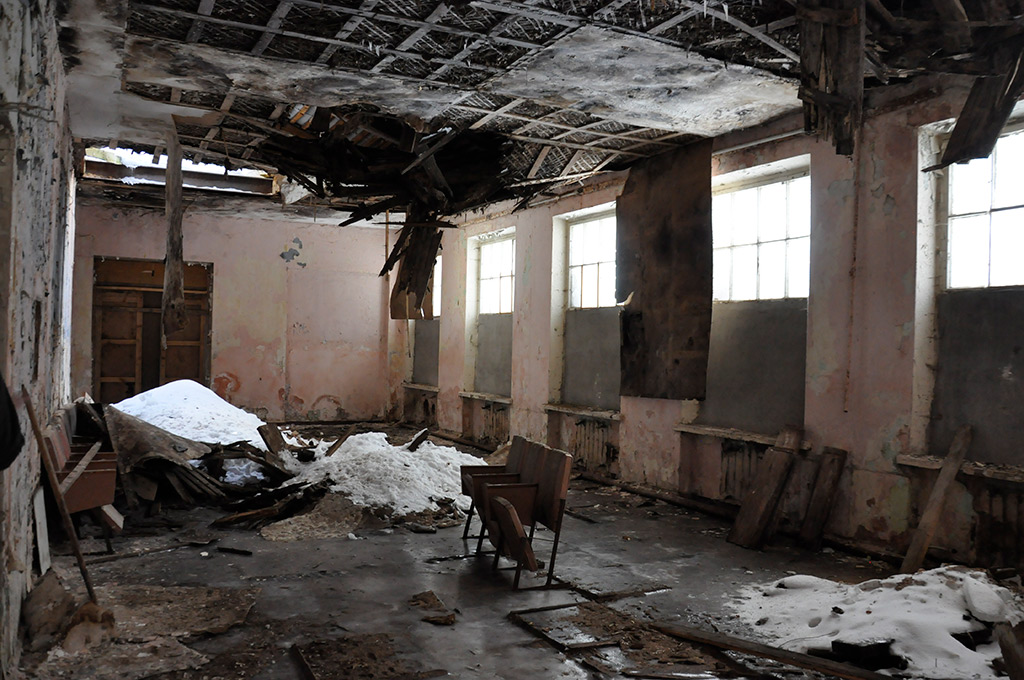
Nardom House of Culture. 2017. Photo from the private archive of authors.
This metaphor didn’t occur to us immediately. At one point someone suggested that we paint the wall of a building as part of the annual ARTBAT FEST street art festival in Almaty , the capital of Kazakhstan. The theme was “After History”. We started searching the internet but couldn’t find anything about the recent history of those places. It existed. The past linked Russia and Kazakhstan. And we imagined that history had “not downloaded” to the internet and visualised it as the coat of arms of the USSR disintegrating into pixels and dissolving into the grey, empty field of an “undownloaded” picture. On the façade of the building it would have partly resembled a Soviet mosaic, half of which had disintegrated.
They rejected the sketch for political reasons. Kazakhstan decided to excise from its history everything connected to the USSR and return to its roots. And in our country the new generation of millennials can’t tell you much about the past. In our town young people don’t know what a House of Culture is. People don’t know history and access the internet, but digital memory can let you down as it is also incomplete. That’s where the title 206 Partial Content came from. It includes the number of a computer error, which is how we perceive our memory of the Soviet Union.
The background of the work is like a computer screen, very smooth. Then we add fragments of an image, which are partially destroyed. The image becomes interesting at the moment of disappearance, the moment of loss. Something new opens up within it, something unexplored. Painting is like a peeling wall, which changes its contours due to the action of time. New images appear, which ooze through the space. In some places the paint layer goes beyond the surface of the canvas, grows out to the sides, leaves the screen. The pixels seem to complete reality or it’s the opposite and the content can’t download. They are either pieces of painting which have fallen off the canvas, laying bare the digital foundation, or a number which has begun to complete the emptiness of reality. In this project it was also interesting to work with Erik Bulatov’s tradition of “flat and spatial”. He likes to say that “the picture turns into a space while remaining a flat surface”.
The predominant colour in our work is that of underwater. It is the cold illumination of the screen and also a kind of Atlantis, submerged modernism, the lost civilisation of the Soviet Union.
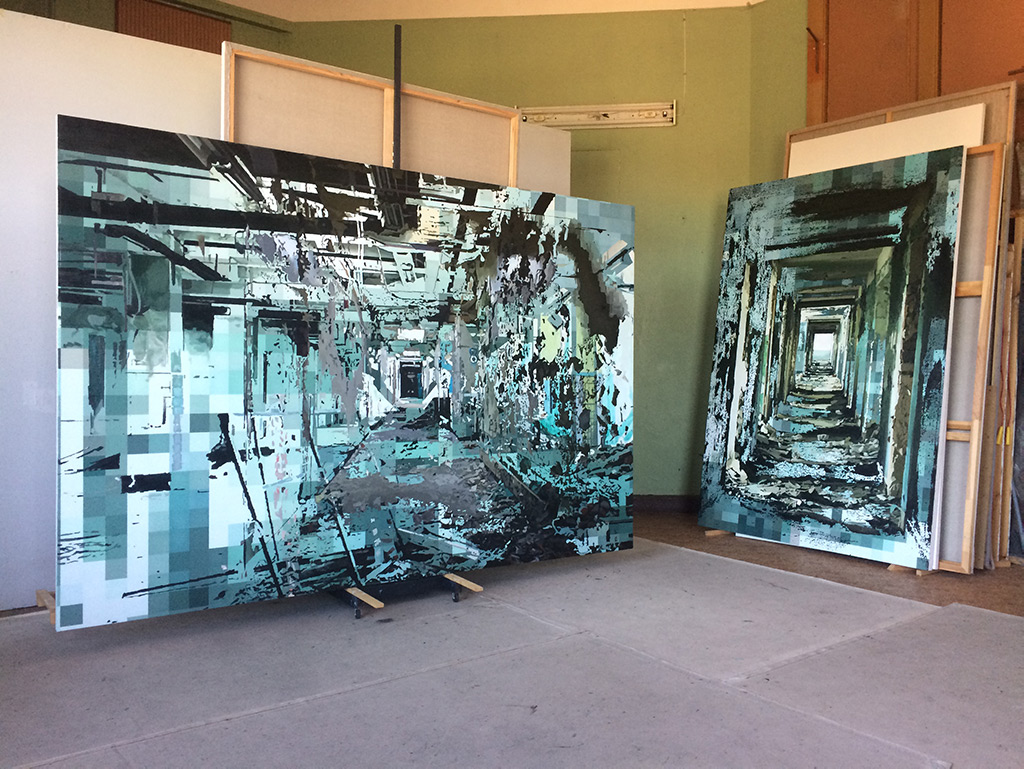
From the series "206 Partial content". 2018.
Did you spend a long time working on the project?
It was very painstaking work and took around two years. We spend considerable time making sketches. We produce them on the computer and out of two hundred possible variations we choose five or six. We think through how they will interact with each other within the space. Then we make paintings together, literally. We have the same training and we do this side by side.
The exhibition was not just large paintings on the walls but also included other media, from old plaster to sound.
We love working with space. We always want to use it to the maximum because we understand that the contemporary person no longer sees a picture on the wall as a window into another world. And we’re very interested in the idea of the Gesamtkunstwerk, the all-encompassing, total work of art, which combine all types of art in a single impulse. For the exhibition at XL Gallery we covered the floor with plaster which we brought from our House of Culture. We collected it in boxes from the walls: it had blown due to damp. We collected five large boxes. We didn’t plan it this way, but the colour of the plaster matched that on the canvases: all those blueish, grey and green “Soviet” shades. It was exactly like the plaster had peeled off the canvases. It continued the space of the pictures. Like “extended painting”. We also wanted to connect this plaster to history and printed on a number of pieces text from old Soviet newspapers that we got from Masha’s grandad. Pravda, articles about workers… The inquisitive viewer could see them at their feet. And sometimes people didn’t notice them and walked on the plaster, which turned to dust under their feet. This was a real moment of collapse, which confirmed that which was depicted on the paintings.
There was also sound. We recorded it at Nardom, when we stayed late. In the silence of the empty House of Culture, the buzzing lamp, sounds of footsteps and the noise of the crumbling walls sound sharp and impressive. This is the oblivion and majesty of destruction.
Do you have plans for the future?
